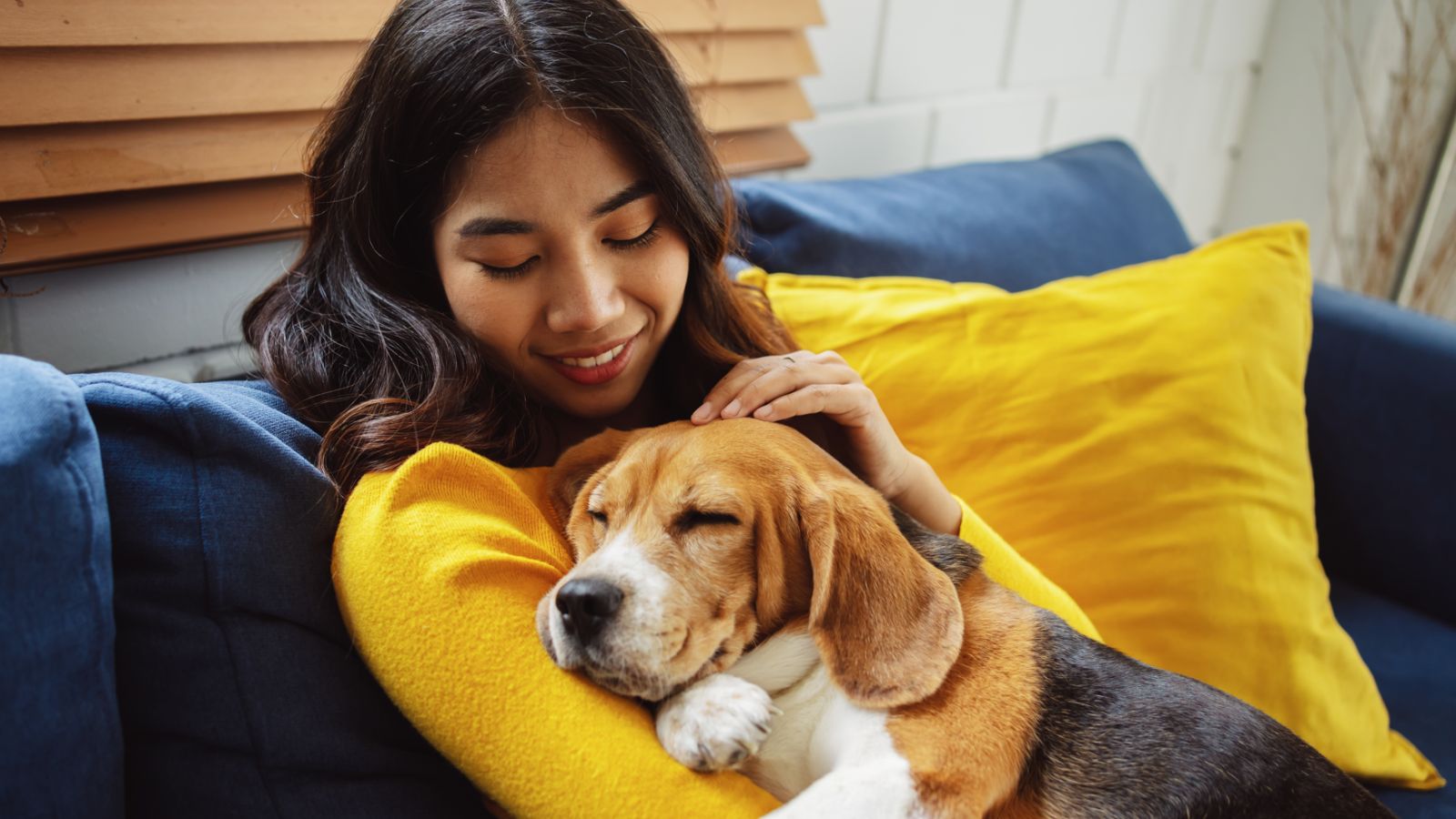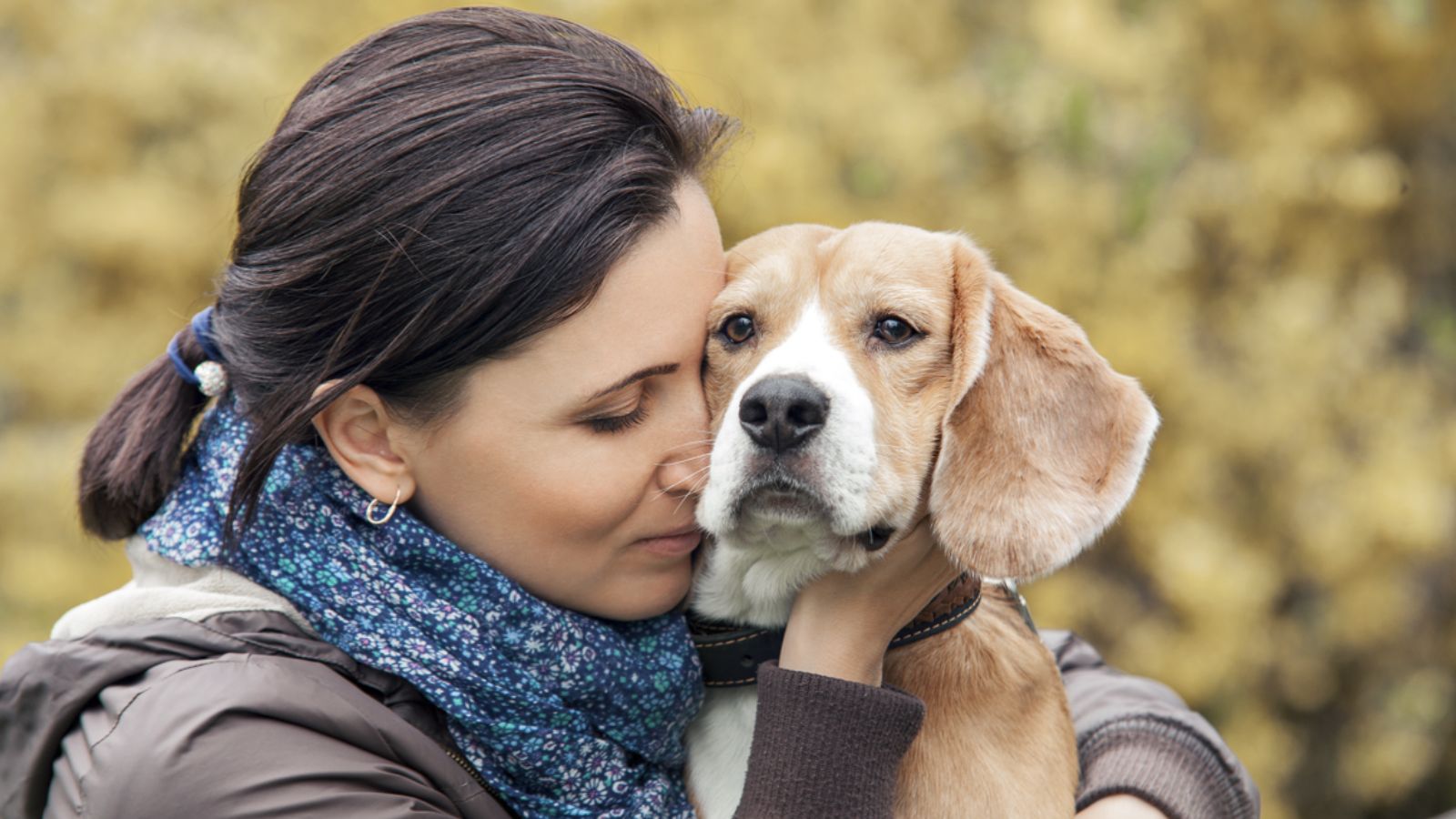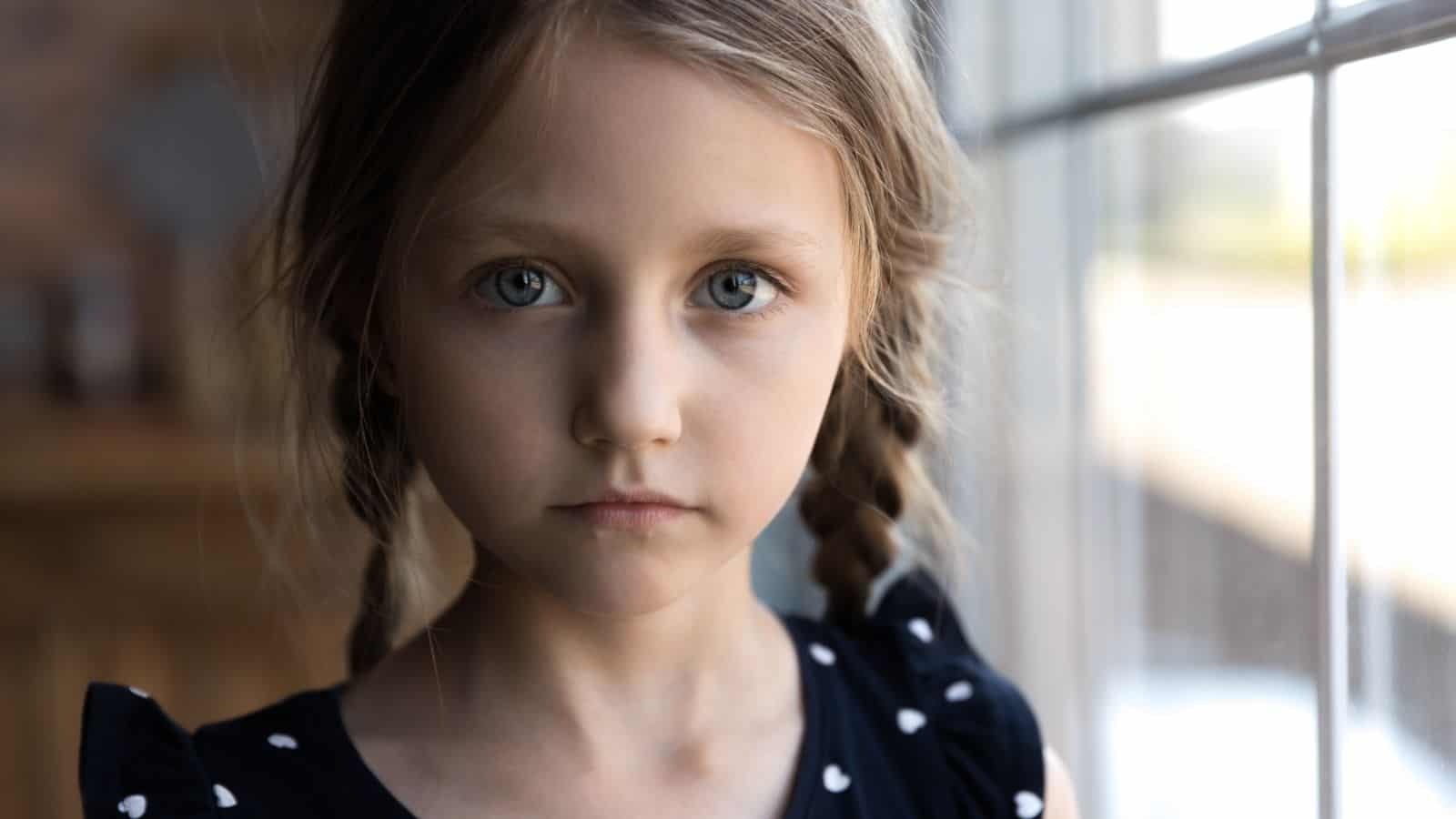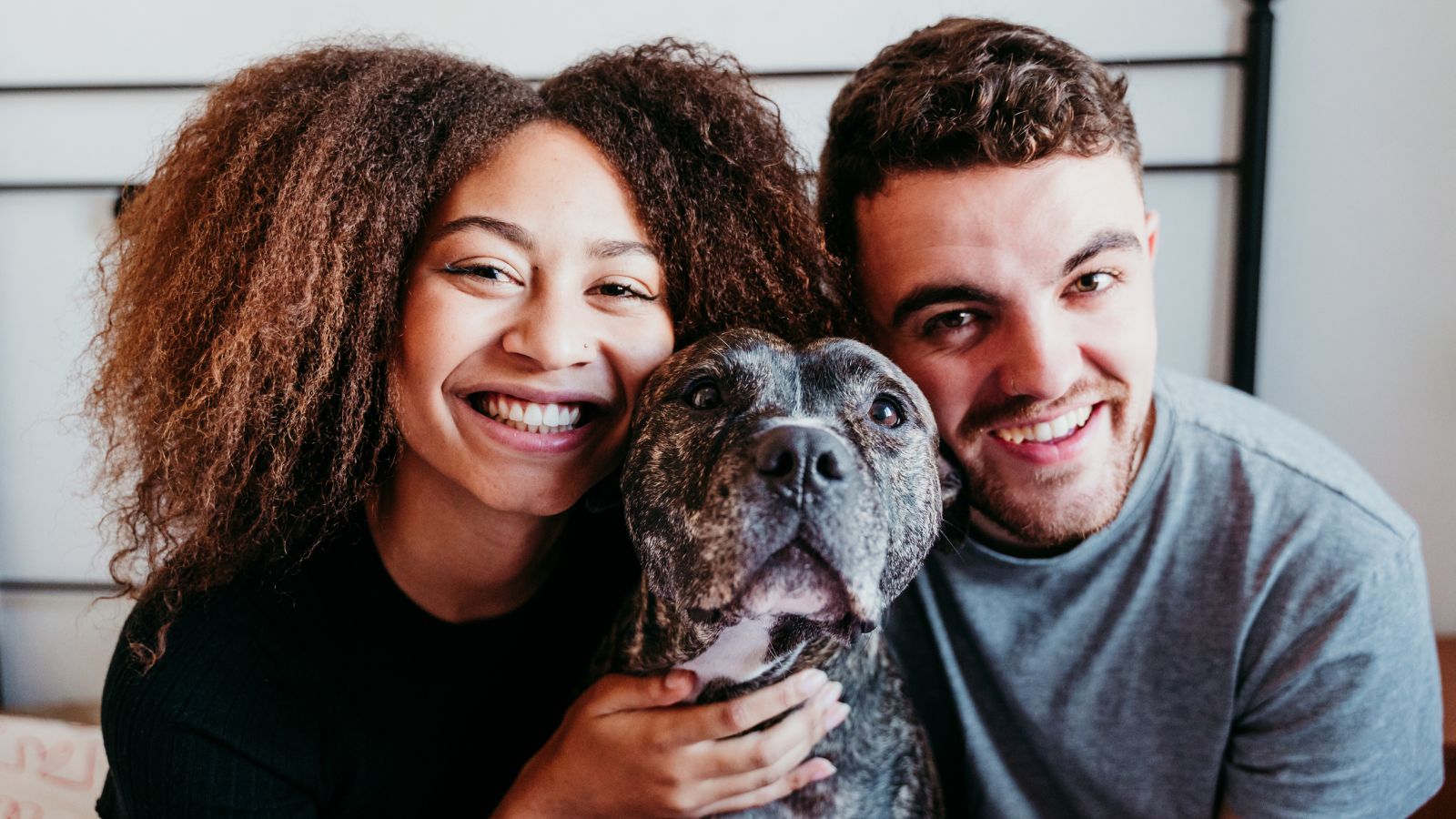Canine companions have been helping, protecting, and comforting humankind for at least 15,000 years (possibly as long as 36,000!), and they rightly hold a special place in our hearts. Although we may be very different kinds of mammals, thousands of years of coevolution have resulted in a surprising number of similarities—here are 18 things we have in common with dogs.
Social Butterflies

Just like us, dogs are inherently social creatures. Their wolf ancestors lived in packs that worked together to hunt, raise young, and defend their territory. They’re happiest when included, and they love interacting with their human, dog, or even cat companions! To keep them content, your dog needs positive social experiences—just like you do—and can get depressed or lonely if these needs aren’t met.
Foodies at Heart

While it doesn’t apply to every human or dog, most individuals of both species get excited about mealtimes. Dogster adds, “Dogs seem to love their food. Some… might even agree that a dog’s favorite time of the day is mealtime when they get to enjoy their food with a wagging tail.” A mutual enjoyment of delicious food is something we share with our canine companions, which can be very useful for positive training.
Emotional Rollercoaster

Dogs can seem to be happy-go-lucky all the time, but research indicates they experience a range of emotions, from joy and excitement to sadness, fear, anxiety, and even jealousy. These emotions can be ‘read’ in their behavior, vocalizations, and facial expressions, making them very much like humans. For example, a happy dog has relaxed ears, a waggy tail, and maintains eye contact.
Learning Machines

Dogs may not be able to match human intellect, but that doesn’t mean they lack intelligence. Studies suggest that dogs possess cognitive abilities comparable to those of a two-year-old child and that specific individuals can be smarter still. They can be trained to perform complex tasks (e.g., guide, police, and other working dogs), and many can understand human reactions and moods.
Masters of Communication

While they may not speak any human language, dogs are adept at communicating their needs and desires, both to their human caregivers and to conspecifics. They use vocalizations, body language, and facial expressions to get their point across. By paying close attention to these signals, we can learn to “speak dog” and greatly improve how we respond to our dogs’ needs.
Laughter

Laughter is commonly considered a uniquely human trait, and most scientists agree that dogs can’t laugh—but they do make an equivalent sound. According to Purina, dogs typically make this “play growl” while excited or playing by forcefully exhaling while panting breathlessly.
It often accompanies playful or happy body language, like bows, open mouths, and alertness.
Dreaming

Ever notice your dog twitching its paws or whimpering in its sleep? You may joke that they’re dreaming, but you’d be right! Although we can’t ask them, canine brain activity during sleep cycles is similar to ours, strongly suggesting they’re reliving daily adventures or chasing squirrels in their dreams. Try to avoid disturbing your dog during these REM sleep cycles.
Positive Interactions Reduce Stress

Multiple studies show that interacting with dogs reduces human stress, lowering blood pressure, reducing stress hormones, and often improving our mood. Yet, the effect is also experienced by dogs. Stroking a dog’s fur is relaxing, as it lowers cortisol (a stress hormone) in humans, yet it also reduces cortisol in the dog who is receiving the pets! It’s a win-win.
Love for Play

Play is an essential part of life for both humans and dogs, especially for children/puppies and younger individuals. It strengthens social bonds, provides physical and mental stimulation, and increases positive feelings, lifting our mood. Engaging in playtime with your dog is a great way for both of you to connect, exercise together, and help make each other happy.
Self-Awareness

Studies show that dogs can’t recognize their reflections, a feat reserved for humans, gorillas, crows, and dolphins. But mirror experiments aren’t appropriate for olfactory-dominant dogs. WBUR suggests dogs are self-conscious because studies with urine show they spend less time sniffing their deposits than those of others—showing they recognize their own smells.
Tactile

Physical touch is important in close human relationships, and acts like hugging, holding hands, sitting together, or kissing all release oxytocin and other “feel-good” hormones. This is true for dogs as well. A dog who is being petted, hugged, or snuggled by someone they love and trust has more oxytocin, and this promotes feelings of love, connection, and contentment. Awwww.
Aging

All animals age, but we notice it most profoundly in our pets because they live with us and tend to live much longer than wild animals. Like humans, dogs experience physical and mental changes as they age, and certain abilities often decline (like sight, agility, and hearing). Elderly dogs also experience a reduced desire to play and even cognitive decline and confusion.
Getting Comfortable

Like humans, dogs appreciate comfort, whether a cooling dip on a hot day or a warm, soft, and cozy bed on a winter’s night. Dogs also feel comforted by the presence of their owners and other dogs, who provide social interaction and a sense of security. In the wild, wolves huddle together for warmth and comfort—so don’t be surprised if they expect to get on the couch with you for snuggles!
Jealousy

Business Insider asserts that our canine companions get jealous, just like we do, and “they may whine, bark, growl, or push other pets or people away from you.” While such jealousy is normal, it can be beneficial to utilize some gentle training techniques to teach your dog to cope when your focus isn’t on them. Now, if only we had some such techniques for jealous people!
Separation Anxiety

Both humans and dogs experience separation anxiety when left alone for extended periods because we are both inherently social and need companionship to feel content. Being pack animals who evolved to rely on their social group for survival, dogs are uncomfortable being excluded for long periods of time. They may whine, pace, destroy furniture, or bark excessively.
Empathic

Dogs seem to have an uncanny ability to sense our emotions, and many understand how to respond to them, too. Canine companions that are strongly bonded to their owners often offer appropriate support when their human is sad, stressed, or happy—like putting a comforting paw on their lap or becoming subdued or excited, highlighting their emotional intelligence.
Selective Hearing

We’ve all experienced it: call your dog’s name when they’re sniffing or playing, and they don’t react—yet rattle the treat tin at any time, and they come running from a distant corner of the house! Selective hearing isn’t unique to human teenagers—dogs also prioritize the most relevant sounds, just like you do when you tune out background noise during a conversation.
Sweets Lovers

Most people enjoy a sweet treat, and our canine companions share this weakness for sugar. The American Kennel Club claims dogs can taste sour, salty, sweet, and bitter flavors—and even have separate taste buds for water! While too much sugar is bad for them, omnivorous dogs do enjoy sweet treats like fruit, unlike felines (who are obligate carnivores).
Read More: 20 Things We Did When We Were Young That We Regret Now

It’s easy to say hindsight is 20/20, but what advice would you really give your younger self? Here are 20 things that most people did when they were young that they regret today.
20 Things We Did When We Were Young That We Regret Now
17 Things That Used to Be Highly Respected But Isn’t Anymore

Many things in the world used to be well-respected before turning into complete jokes for various reasons. An internet survey recently asked people, “What is something that was once highly respected but is now a complete joke?” Here are the top 20 answers:
17 Things That Used to Be Highly Respected But Isn’t Anymore
17 Fairy Tales That Are Now Considered Racist

While fairy tales weave magical narratives that span generations, many emerge from historical and cultural contexts tinged with biases. Hiding in many of these tales, racial undertones can be found. Let’s look at 17 fairy tales that have deeper implications.
17 Fairy Tales That Are Now Considered Racist
17 Things Society Can No Longer Do Because Gen Z Said So

Gen Z, our digital-native, trendsetting generation, is making waves in the cultural sea, steering the ship of societal norms in fresh and unexpected directions. As they charter new territories, there are certain practices they’d rather we say goodbye to. Curious? Let’s take a look at 17 things the rest of us can no longer do because Gen Z said so.
17 Things Society Can No Longer Do Because Gen Z Said So
18 Common Traits Found in Adults Who Had Unhappy Childhoods

Being a parent is a hard job, so even those who are truly trying their best will often miss the mark on creating the best environment for their children. Unfortunately, this means that many of us grow up with far-from-perfect childhoods that affect us into adulthood. Here are 18 common traits found in adults who had unhappy childhoods.

